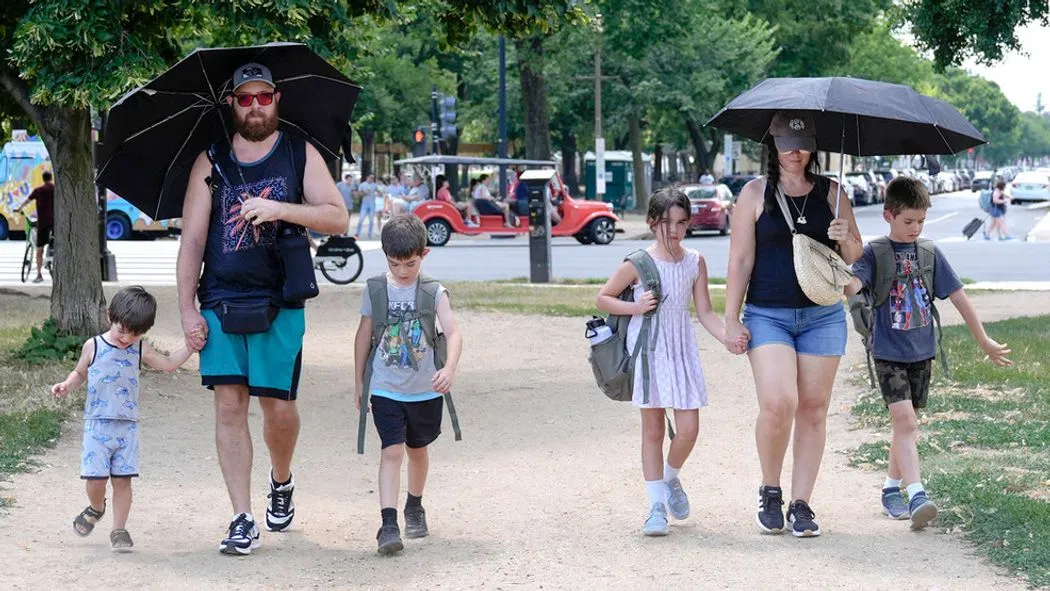Record-Breaking Heat Wave Bakes West and Swelters East
As summer settles in across the United States, a persistent and extreme heat wave has gripped the nation, leading to unprecedented temperature spikes from coast to coast. Meteorologists warn that this prolonged heat wave is set to shatter new records, with the Western states experiencing intense baking and the Eastern regions sweltering under relentless heat. This article explores the causes, impacts, and future implications of this extreme weather event, shedding light on the broader context of climate change and its role in shaping such phenomena.

The Heat Wave Unfolds
The current heat wave, which began in late June, shows no signs of abating. From California to New York, millions of Americans are feeling the heat as temperatures soar well above the average for this time of year. The National Weather Service (NWS) has issued heat advisories and excessive heat warnings for large swathes of the country, urging residents to take precautions against heat-related illnesses.
In the West, cities like Phoenix, Las Vegas, and Sacramento are experiencing temperatures exceeding 110°F (43°C), with some areas forecasted to reach new all-time highs. The East is not spared either, as cities like New York, Washington D.C., and Atlanta face oppressive heat combined with high humidity, making it feel even hotter.
Causes of the Heat Wave
Several factors are contributing to this relentless heat wave. A high-pressure system, often referred to as a "heat dome," has settled over the Western U.S., trapping hot air and preventing cooler air masses from moving in. This heat dome intensifies the warming, creating a self-reinforcing cycle of extreme temperatures.
Additionally, climate change plays a significant role in exacerbating heat waves. Rising global temperatures due to increased greenhouse gas emissions have made heat waves more frequent, intense, and prolonged. The current heat wave is a stark reminder of the broader impacts of climate change on weather patterns and the urgent need for climate action.

Impacts on Daily Life
The impacts of this heat wave are far-reaching and multifaceted. Public health is a primary concern, as prolonged exposure to extreme heat can lead to heat exhaustion, heatstroke, and other heat-related illnesses. Vulnerable populations, including the elderly, children, and those with pre-existing health conditions, are particularly at risk.
Infrastructure is also under strain. The increased demand for electricity to power air conditioning units has led to concerns about power grid stability, with utilities urging consumers to conserve energy. In some areas, rolling blackouts have been implemented to manage the load. Roads, bridges, and railways are susceptible to heat-related damage, causing disruptions to transportation networks.
Agricultural and Environmental Consequences
The agricultural sector is feeling the heat as well. Crop yields are threatened by the extreme temperatures, which can stress plants and reduce productivity. Livestock are also at risk, as animals struggle to stay cool in the scorching heat. Farmers are facing increased costs for irrigation and cooling measures to protect their crops and animals.
The environment is not immune to the effects of the heat wave. Forests and wildlands are drying out, increasing the risk of wildfires. In recent years, the Western U.S. has seen a surge in wildfire activity, and the current heat wave sets the stage for another potentially devastating fire season. Water resources are strained as well, with reservoirs and rivers experiencing lower-than-average levels due to increased evaporation and reduced snowmelt.

Preparing for the Future
As the current heat wave underscores the immediate impacts of extreme weather, it also highlights the importance of preparing for future events. Adaptation strategies are essential to protect communities, infrastructure, and ecosystems from the increasing frequency and intensity of heat waves.
Urban planning can play a crucial role in mitigating the effects of extreme heat. Cities can implement heat mitigation measures such as planting trees to provide shade, creating green spaces to reduce urban heat islands, and using reflective materials in construction to lower surface temperatures. Public health campaigns can raise awareness about the dangers of extreme heat and provide guidance on staying safe during heat waves.
At the policy level, addressing climate change is paramount. Reducing greenhouse gas emissions through transitioning to renewable energy sources, improving energy efficiency, and implementing carbon pricing mechanisms can help mitigate the long-term impacts of global warming. International cooperation and commitment to the goals of the Paris Agreement are essential to limit global temperature rise and prevent the worst effects of climate change.
Conclusion
The persistent heat wave currently gripping the U.S. is a stark reminder of the changing climate and its impact on weather patterns. As the West bakes and the East swelters, the need for immediate action to address climate change and implement adaptation measures becomes increasingly urgent. By understanding the causes and consequences of extreme heat, we can better prepare for the future and protect our communities and environment from the growing threat of climate change.
In the face of record-breaking temperatures, it is clear that the time to act is now. Through a combination of local initiatives, national policies, and global cooperation, we can work towards a more resilient and sustainable future. The current heat wave serves as a wake-up call, urging us to confront the challenges of climate change head-on and take meaningful steps to safeguard our planet for generations to come.


You must be logged in to post a comment.